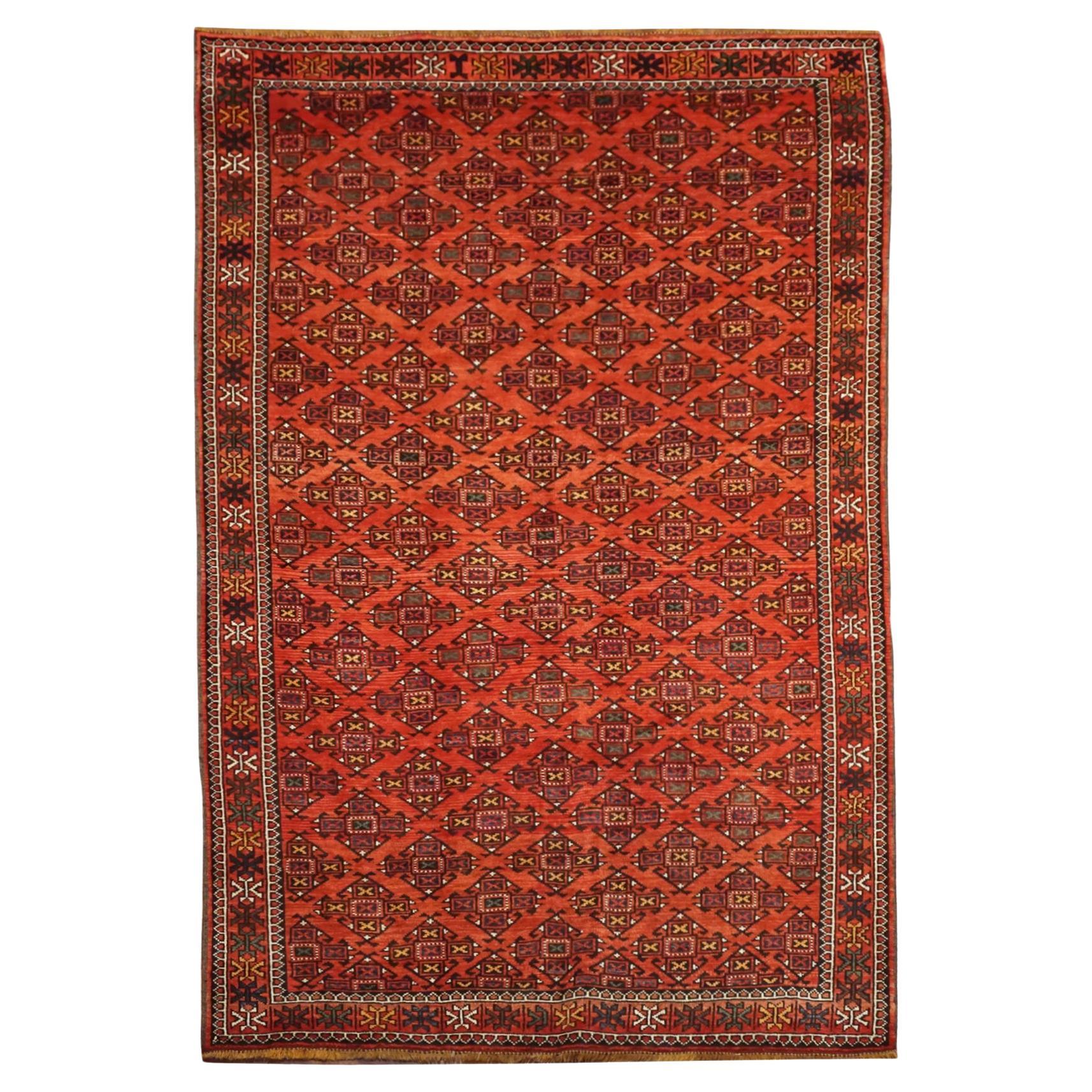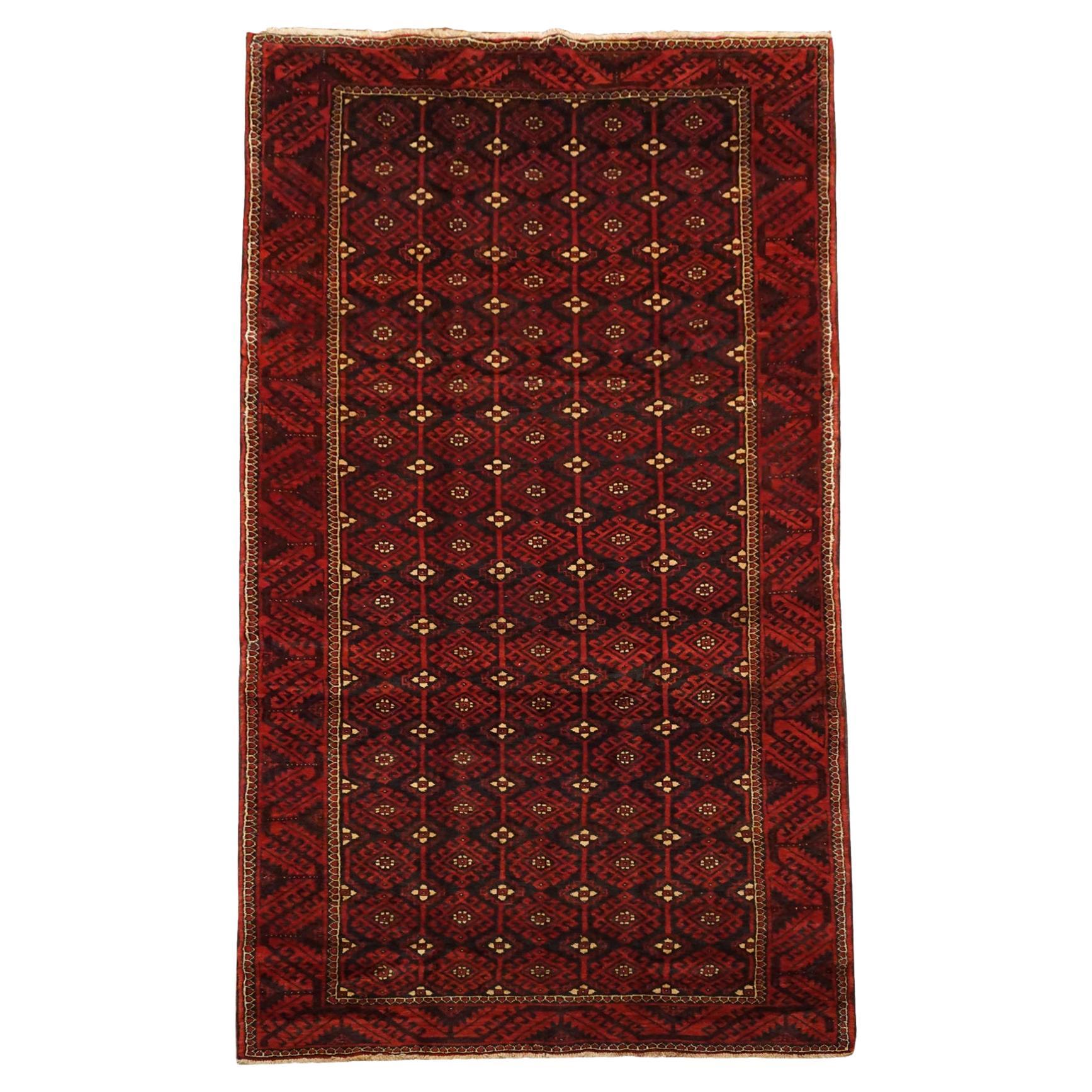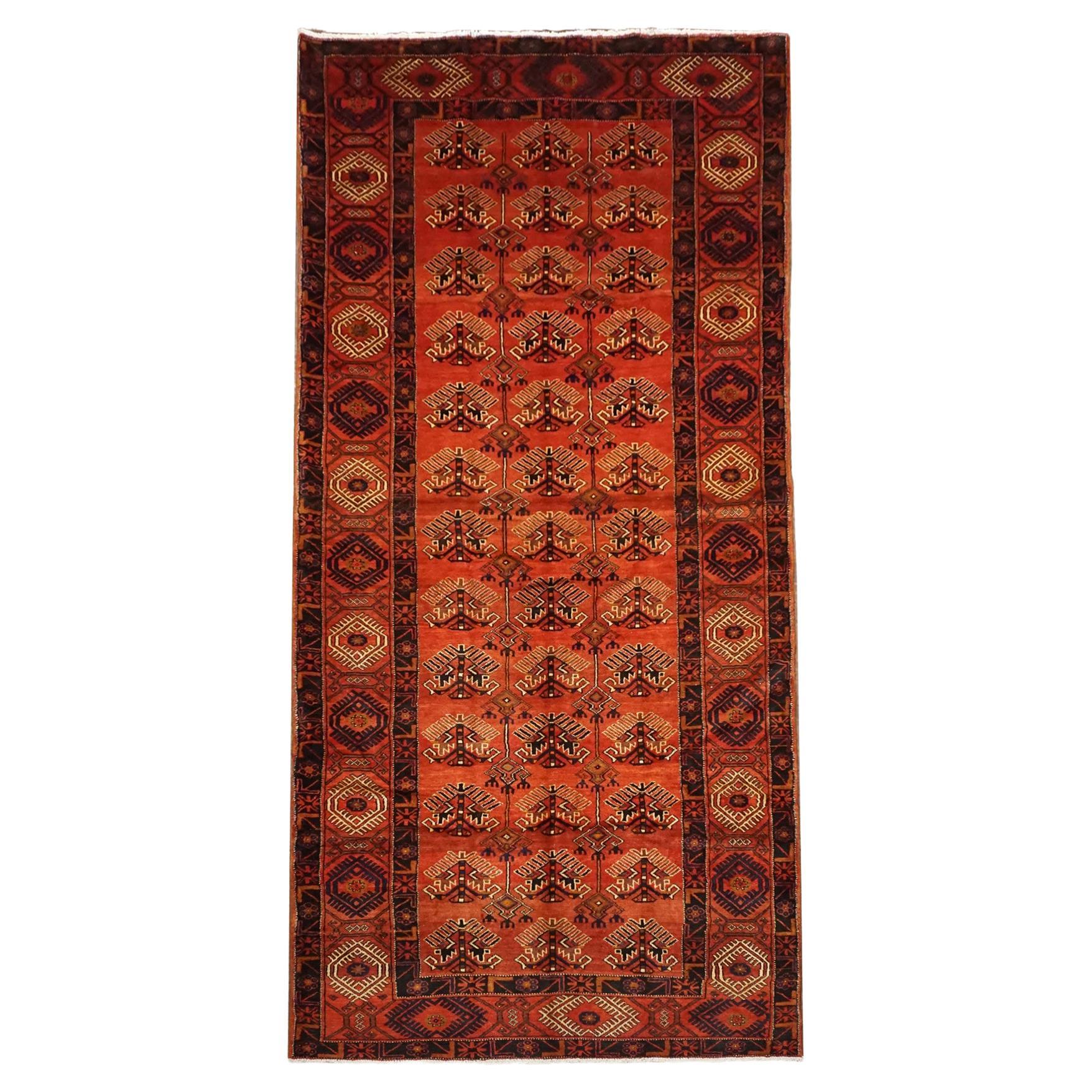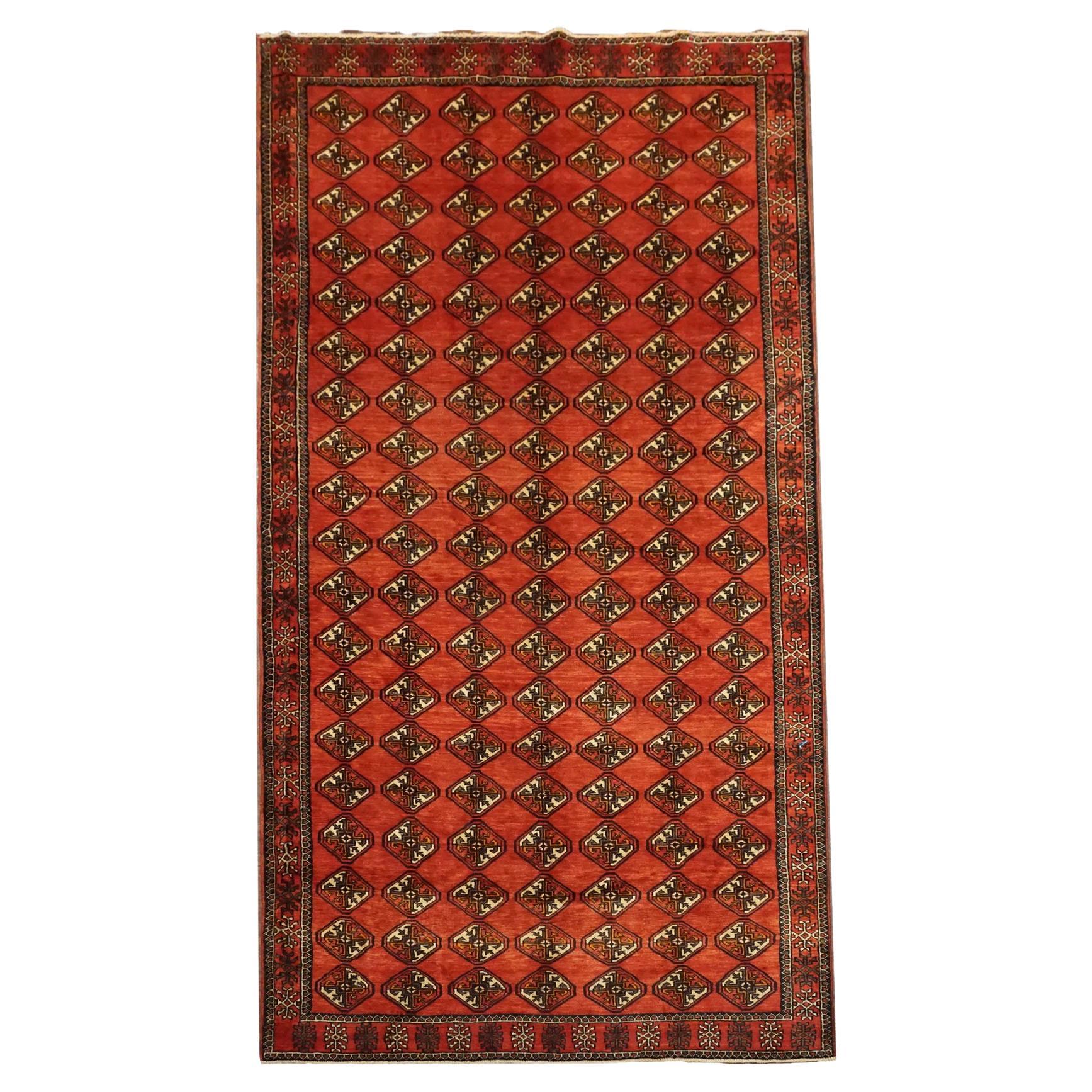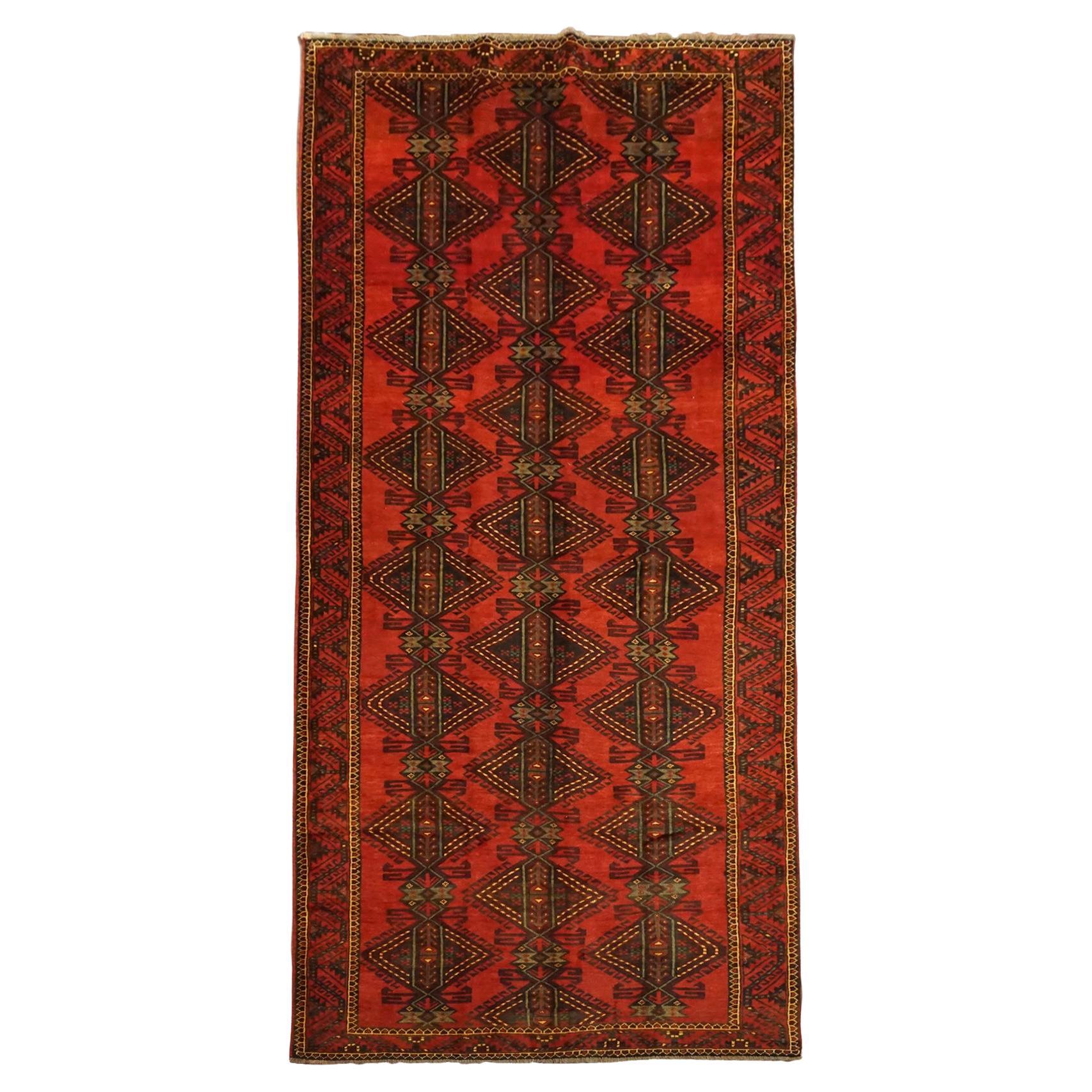Items Similar to Turkoman Tribal Abrash Gallery Runner, circa 1940
Want more images or videos?
Request additional images or videos from the seller
1 of 8
Turkoman Tribal Abrash Gallery Runner, circa 1940
About the Item
Hand-knotted, abrash wool pile on a cotton foundation.
Circa 1940
Dimensions: 4'8" x 13'1"
Origin: Iran
Condition: Excellent
Field Color: Burgundy
Border Color: Burgundy
Accent Colors: Black, Ivory
About the Seller
No Reviews Yet
Vetted Seller
These experienced sellers undergo a comprehensive evaluation by our team of in-house experts.
Established in 2013
1stDibs seller since 2022
13 sales on 1stDibs
Typical response time: 16 hours
- ShippingRetrieving quote...Ships From: Laguna Hills, CA
- Return PolicyA return for this item may be initiated within 14 days of delivery.
More From This SellerView All
- Antique Tribal Turkoman Gallery Runner, circa 1940Located in Laguna Hills, CAHand-knotted, abrash wool pile on a cotton foundation. Circa 1940 Dimensions: 5'1" x 9'10" Origin: Iran Condition: Excellent Field Color: Red Border Color: Red ...Category
Vintage 1940s Persian Tribal Persian Rugs
MaterialsWool
- Tribal Baluchi Gallery Runner with Abrash, circa 1900Located in Laguna Hills, CAHand-knotted, abrash wool pile on a cotton foundation. Circa 1900 Dimensions: 5'3" x 11'6" Origin: Iran Condition: Excellent Field color: Black Border color: Che...Category
Early 20th Century Persian Tribal Persian Rugs
MaterialsWool
- Tribal Baluchi Gallery Runner, circa 1940Located in Laguna Hills, CAHand-knotted wool pile on a cotton foundation. Circa 1940 Dimensions: 5'4" x 13'4" Origin: Iran Condition: Excellent Field Color: Rust Border Color: Rust Acc...Category
Vintage 1940s Persian Tribal Persian Rugs
MaterialsWool
- Tribal Bukhara Gallery Runner, circa 1940Located in Laguna Hills, CAHand-knotted wool pile on a cotton foundation. Circa 1940 Dimensions: 5'5" x 12'8" Origin: Iran Condition: Excellent Field Color: Rust Border Color: Rust Acce...Category
Vintage 1940s Persian Tribal Persian Rugs
MaterialsWool
- Tribal Baluchi Gallery Runner, circa 1940Located in Laguna Hills, CAHand-knotted wool pile on a cotton foundation. Circa 1940 Dimensions: 5'1" x 13'1" Origin: Iran Condition: Excellent Field Color: Red Border Color: Red Acce...Category
Vintage 1940s Persian Tribal Persian Rugs
MaterialsWool
- Antique Karajeh Sarab Gallery Runner with Abrash, circa 1940Located in Laguna Hills, CAHand-knotted, abrash wool pile on a cotton foundation. Circa 1940 Dimensions: 3'7" x 13'10" Origin: Iran Condition: Excellent Field Color: Rust-Red Border Color...Category
Vintage 1940s Persian Tribal Persian Rugs
MaterialsWool
You May Also Like
- Tribal Vintage Persian Gallery RunnerLocated in New York, NYQuirky Gallery size Vintage Tribal persian gallery Runner. Measures: 4'8'' x 10'5''Category
Mid-20th Century Persian Tribal Persian Rugs
MaterialsWool
- Tribal Mid-20th Century Handmade Persian Turkoman RunnerLocated in New York, NYA vintage Persian tribal Turkoman rug in runner format handmade during the mid-20th century. Although this rug is of Persian origin, the roots of Turkoman rugs originated in the Central Asian region. Measures: 1' 6" x 10' 4" Central Asian Rugs & Carpets: Central Asia is a vast area stretching from Northeastern Persia to western China, and from northern Afghanistan to the southern edge of Russia. The carpets can be usefully divided into three groups: the nomadic Turkmen rugs of Turkmenistan, northern Afghanistan, and northeastern Persia; the non-Turkmen tribal pieces from Kazakhstan, Uzbekistan, and Kirghizstan; and the urban creations of Khotan, Yarkand, and Kashgar, oasis cities of Western China (Xinjiang Province). Commercially, the most important group is from Khotan, the easternmost of the Chinese Turkestan cities. The craft of rug weaving is primarily in the hands of Muslim Uighurs. Khotan carpets mix purely Central Asian design themes with Chinese elements. Native Khotan devices include pomegranate trees, upright flowers, round medallions, and yellow or red grounds. Chinese motives include triangular fretwork corners, swastika fretwork, and Yun-Tsao Tou (clouds and rain) diagonally striped polychrome borders. Cotton foundations, asymmetrical (Persian) knots, and medium weaves are standard. Some vintage Khotan are in horizontal, pictorial layouts with multiple various vases and plants. Saphs (multiple prayer niche panel carpets) are also a Khotan specialty. Others employ stepped and layered lozenge medallions, singly or in pairs. Still others, almost all antique, feature a stylized version of the allover Persian Herati design. Many of the oldest pieces employ brown wool wefts. Antique and vintage Khotans are almost always in the k’ang (double square) layout, conforming to the local household plans. Only relatively recently has the 6’ by 12’ or 7’ by 16’ format been replaced by the 9’ by 12’ size. As a result, an antique room size Khotan carpet is very uncommon. Reds are cinnamon, tomato and rust, never wine reds, crimson, or scarlet. Yarkand, farther west on the old Silk Road specializes in multi-medallion long carpets while Kashgar, farthest west and most under Persian influence, has traditionally knotted allover pattern pieces with finer weaves, often with silk piles, and enriched with medal thread, on cotton foundations. Extant Kashgars go back to the 17th century, but the carpet craft in Chinese Turkestan must be much older as fragments have been recovered from local tombs of the early C.E. period. Kashgars are the rarest of all East Turkestan rugs. Most available vintage East Turkestan carpets are interwar Khotans, many with pleasingly soft decorative palettes. The non-Turkmen nomads include the Kazakh, Kirghiz, Uzbek, and Karakalpak groups. Like the Turkmen, they were once all seasonally migratory, dwelling in round felt tents (yurts), but have been settled, at least partially, in the villages, and have taken up crafts and agriculture instead of sheep herding. As a result, carpet production has transitioned from domestic tent use to commercial sale, but the roots of long traditions are still evident. The Uzbeks weave...Category
Mid-20th Century Persian Tribal Persian Rugs
MaterialsWool
- Antique Tribal Serab Gallery RunnerLocated in New York, NYAn early 20th century Persian Serab gallery tribal rug with light brown, green and blue accents on a camel color grand. Measures: 5'9" x 11'3'.Category
Early 20th Century Persian Bakshaish Persian Rugs
MaterialsWool
- Persian Turkoman Runner, Special SizeLocated in Evanston, ILTurkoman rugs are type of handmade floor-covering textile traditionally originating in Central Asia. It is useful to distinguish between the original Turkmen tribal rugs and the rugs produced in large numbers for export mainly in Pakistan and Iran today. The original Turkmen rugs were produced by the Turkmen tribes who are the main ethnic group in Turkmenistan and are also found in Afghanistan and Iran. They are used for various purposes, including tent rugs...Category
Mid-20th Century Persian Tribal Persian Rugs
MaterialsWool
- Worn Tribal Persian Serab Gallery RunnerLocated in New York, NYAn early 20th century tribal worn Persian Serab wide runner. Measures: 6'6" x 13'.Category
Early 20th Century Persian Bakshaish Persian Rugs
MaterialsWool
- Neutral Color Persian Tribal Wide Gallery RunnerLocated in New York, NYAn authentic early 20th century Persian Serab gallery rug with a large soft blue central medallion set on a khaki field. Measures: 5'1" x 10'1'.Category
Early 20th Century Persian Bakshaish Persian Rugs
MaterialsWool
Recently Viewed
View AllMore Ways To Browse
Turkoman Runner
Antique Persian Lilihan Carpet
Antique Woven Wool Mat
Tabriz Rug Pale Blue
Northeast Auctions
Persian Mashhad Rugs
Tabriz Vase
Vintage Silk Kashan Rug
Very Large Antique Tabriz Rugs
Tabriz Vase Rug
Hand Knotted Mahal Vintage Persian Runner
Distressed Serapi
Antiques And Semi Antique Heriz Serapi Rugs
Vintage Rugs 8 X 10 Persian
Persian Horse Blanket
Palatial Carpet
Persian 1940s Tribal Rug
Antique Qum Carpet
